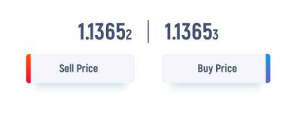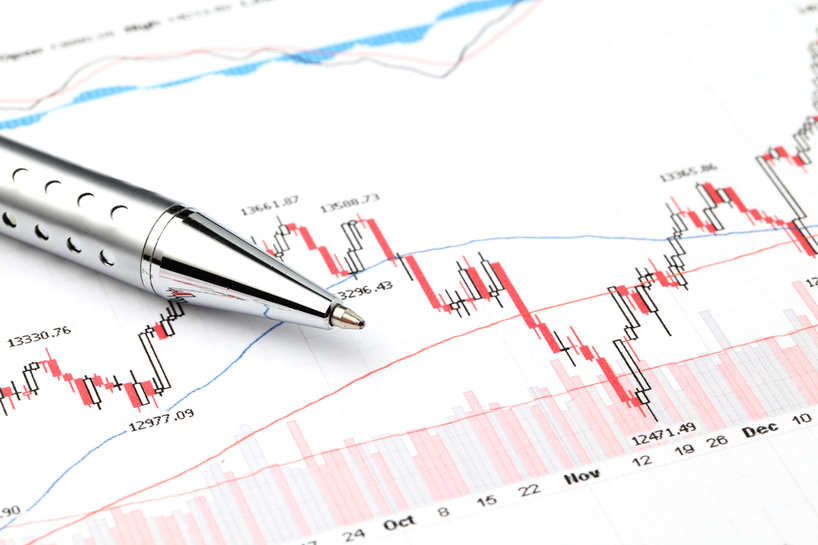WHAT ARE CFDs?

CFD (Contract For Difference) is a financial instrument that gives you the opportunity to trade with a certain type of product (usually stocks, currencies, indices, gold, oil), in a way that you do not become the owner of that product but you only earn when the price of the products rises or falls.
It may sound complicated, but we will do our best to simplify CFD trading for you.
When you start a CFD trade, you do not become the owner of the product and you cannot receive the physical delivery of such product, but you can make a profit by changing the price of that product.
CFD trading gives you the opportunity to make a profit regardless of the movement of the product price. If you firmly believe that the price will rise, then you are buying that product in order to sell it at a higher price. If you think that the price of the product will go down, then you are selling the product (you are opening a sell position).
CFD trading is considered a form of simple and efficient investment in the short term.
When a client places an order to buy or sell a CFD product, he/she trades exclusively through Limit Prime Securities which acts as a broker. When you open a position with us, you must close it with us. CFD trading is the exchange of the difference in price (current price and price at the end of the contract) of a particular product or financial instrument. CFDs are products that are traded with leverage, which means that you only need to deposit a small percentage of the full value of the trade to open a position. This is called margin trading. Although margin trading allows you to increase your income, losses will also increase, as they are based on the full value of the position.
For example, you want to buy 100 shares of Apple. The current price is USD 300. So, to buy 100 shares you would need USD 30,000. However, with Limit Prime Securities you only need to have 1% of the purchase amount, so it is possible to open the same position with only USD 300.
Below we give you an explanation of the basic terms of CFD trading:
SPREAD
Spread represents the difference between the buy and sell price in the quotation of a financial instrument. Mostly it is expressed as a percentage, in money or in pips. What does spread mean for an investor? The spread represents how much the price needs to change for an investor to reach zero (where there is neither a profit nor a loss) after opening a position.
Example:
Figure no. 1 presents the sell and buy price of the currency pair EUR / USD. The question is how much is spread?

As we explained earlier, the spread is the difference between the buy and sell price. In our example, the spread is 0.00001, or 1pip.
PIP
PIP (Price In Points) is the smallest unit of change in the price of a currency pair, ie the last decimal. The change in the price of currency pairs is most often expressed by four or five decimal places, ie. 1pip = 0.0001 or 0.00001.
LOT
A lot is a quantity (set) of a financial product. When you open a position, you determine the quantity in lots, and each lot contains a certain number of products that you want to buy or sell. Namely, a lot represents a standardized quantity of a commodity traded product, for example:
1 lot of gold is 1 ounce of gold.
1 lot of oil is 1 barrel of oil.
1 lot of a currency pair is 100,000 of base currencies.
Why is it necessary to standardize the quantity of goods? In this way, trading on the financial market is simplified. Otherwise, the market would be largely slow and inefficient.
The minimum trading quantity for each product is 0.01 lot, up to the available amount that the client has for trading.

Trade Now
Start TradingMargin is a deposit that is required to open or maintain open positions during trading, ie it serves as collateral to cover possible losses. So, the margin is not an expense, but it represents the share of your capital that is set aside and frozen as a deposit to open a certain position. For example, if you are trading with a x100 leverage, you need 1% of the money to open a position of a certain value, that 1% of the money makes the necessary margin to open such a position.
LEVERAGE
One of the basic characteristics that makes CFD an attractive product is leverage. The leverage allows you to achieve a much larger position with a smaller amount of money.
The previously explained margin is inversely related to leverage. If the required margin for trading is 1%, then the leverage is 1:100, if it is 5% then the leverage is 1:20, etc. The margin and leverage are defined for all traded instruments.
With Limit Prime Securities, the maximum leverage amount is 1:100. Below we will explain what this means for the investor by example:
If you want to trade the currency pair EUR / USD, ie. you want to buy a quantity of EUR 100,000 with leverage of 1:100, how much should you have in your account?
The answer to this question is: 1% * 100,000 = 1,000 EUR 1,000 is the minimum you should have in your account, that is the required margin.
DAILY RATE (Swap)
In addition to charges defined in the Agreement, a daily rate charge which applies to each open position is imposed to the Client. Swap is charged daily on all positions left open. The method of calculation of the daily rate varies according to the type of underlying asset or financial instrument to which the CFD applies. Moreover, the amount of the daily rate will vary between different assets as it is linked to interest rates related to each asset and in addition to an extra financing charge defined by us.
Learn in depth about
what CFD trading is